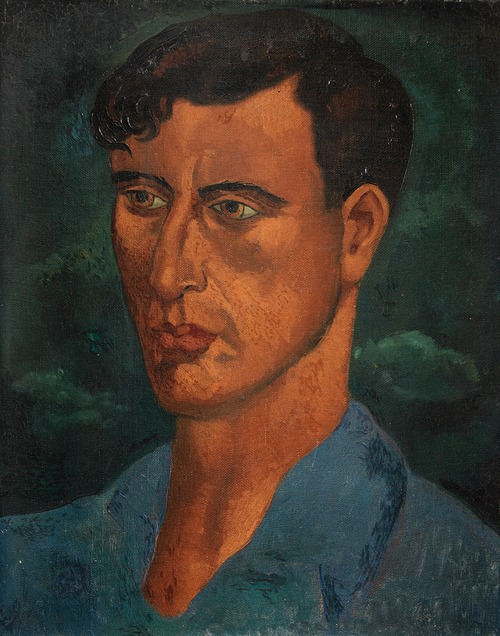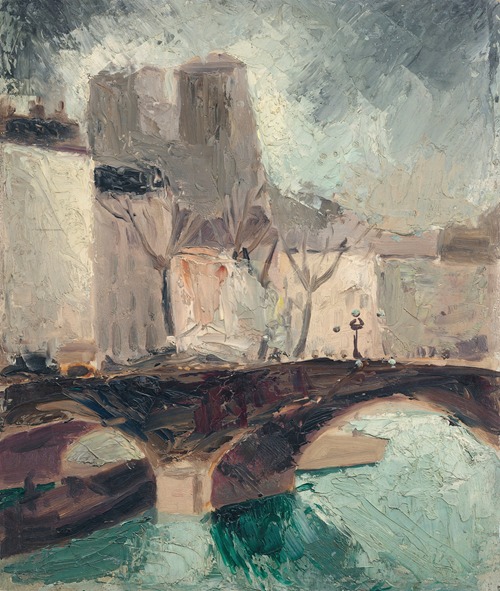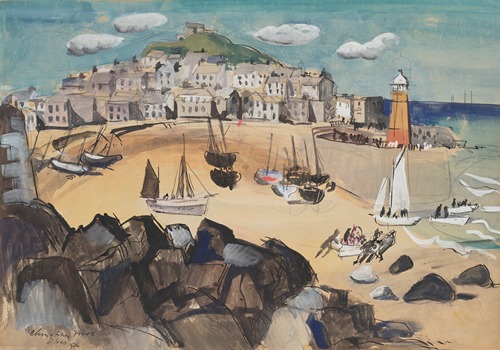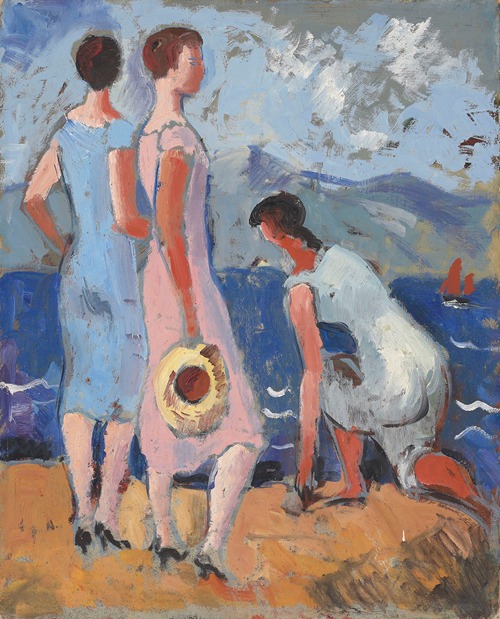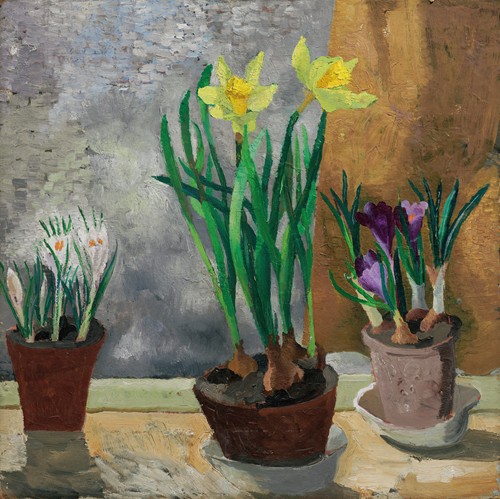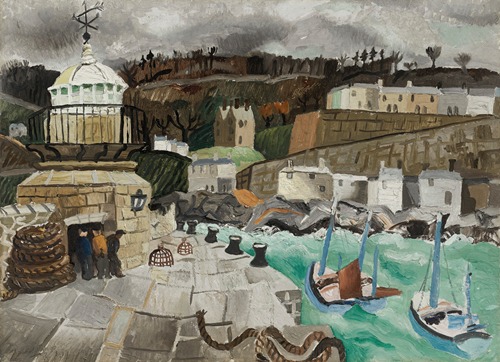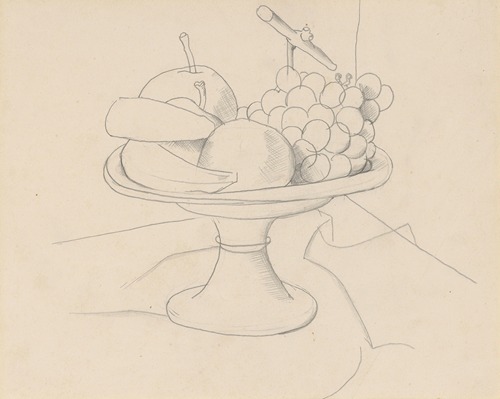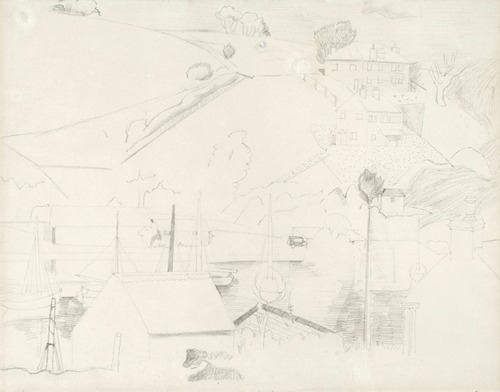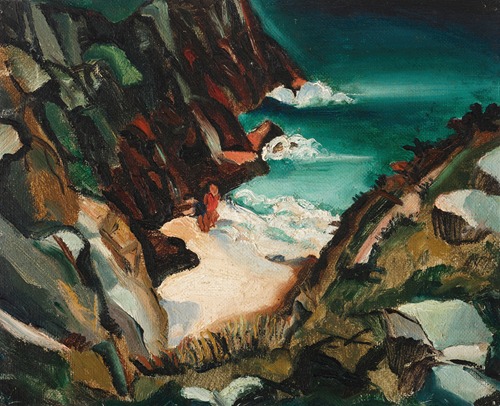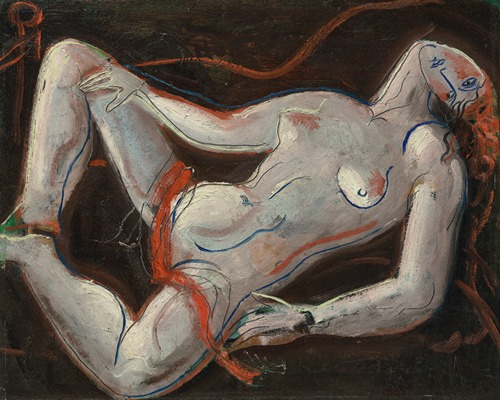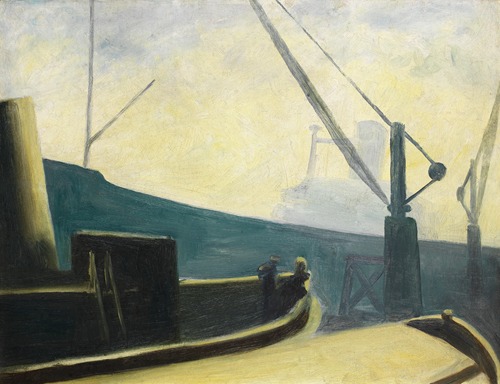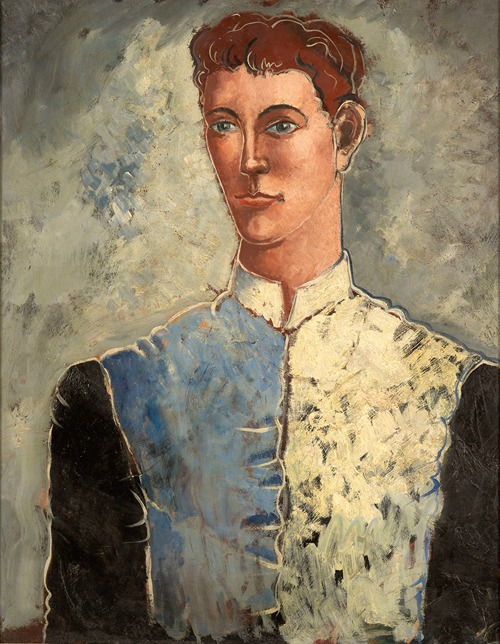
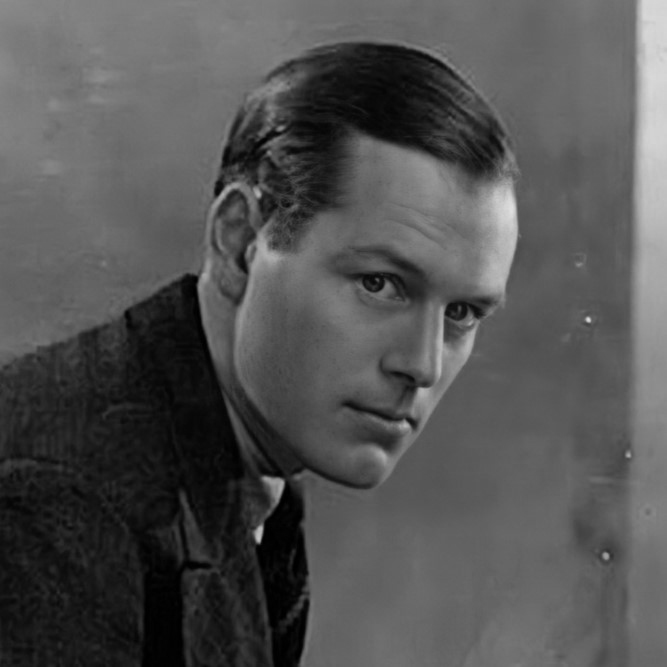
John Christopher "Kit" Wood was an English painter born in Knowsley, near Liverpool.
Christopher Wood was born in Knowsley to Doctor Lucius and Clare Wood. He was educated at Marlborough College in Wiltshire, then briefly flirted with medicine and architecture at Liverpool University before pursuing an artistic career.
At Liverpool University, Wood met Augustus John, who encouraged him to be a painter. The French collector Alphonse Kahn invited him to Paris in 1920. From 1921 he trained as a painter at the Académie Julian in Paris, where he met Picasso, Jean Cocteau, Georges Auric and Diaghilev. He travelled around Europe and north Africa between 1922 and 1924.
By the 1920s his father was running a general practice in Broad Chalke, Wiltshire, and Wood painted a series of canvases there including Cottage in Broadchalke, Anemones in a Window, Broadchalke, and The Red Cottage, Broadchalke.
In 1926, Wood created designs for Constant Lambert's 1925 Romeo and Juliet for Diaghilev's Ballets Russes, although they were never used. The same year he became a member of both the London Group and the Seven and Five Society plus meeting and befriending Ben and Winifred Nicholson. The Nicholsons' dedication to his work had a great influence and exhibited together at the Beaux Arts Gallery in April–May 1927 and subsequently painted together in Cumberland and Cornwall in 1928. Like Nicholson, Wood admired Alfred Wallis whom they met on a trip to St Ives, and whose primitivism influenced Woods' stylistic development.
He painted coastal scenes, and his finest works are considered to be those painted in Brittany in 1929 and during his second trip to Brittany in 1930 when he painted fewer marine pictures and more churches. He claimed that his "mother's people were Cornish and that he got his love of the sea and for boats from his Cornish ancestry".
In April 1929, Wood held a solo exhibition at Tooth's Gallery in Bond Street, London where he met Lucy Wertheim at a private view. She purchased a picture and soon became one of his biggest supporters, buying up his work.
Wood was bisexual. In the early summer of 1921, Wood met José Antonio Gandarillas Huici (1887–1970), a Chilean diplomat who was the son of Chilean Senator José Antonio Gandarillas. Gandarillas, a married homosexual fourteen years older than Wood, lived a glamorous life partly financed by gambling. Their relationship lasted through Wood's life, surviving his affair with Jeanne Bourgoint. In 1927 his plans to elope and marry heiress Meraud Guinness were frustrated by her parents whereupon he required emotional support from Winifred Nicholson. (Meraud went on to marry Chilean painter Álvaro Guevara in 1929.) Wood also had a liaison with a Russian émigrée, Frosca Munster, whom he met in 1928.
By 1930, painting frantically in preparation for his Wertheim exhibition in London, Wood became psychotic and began carrying a revolver. On 21 August, he travelled to meet his mother and sister for lunch at The County Hotel in Salisbury and to show them a selection of his latest paintings. After saying goodbye, he jumped under a train at Salisbury railway station, although in deference to his mother's wishes, it was reported as an accident.
Christopher Wood is buried in the churchyard of All Saints Church in Broad Chalke. His gravestone was carved by fellow artist and sculptor Eric Gill.
